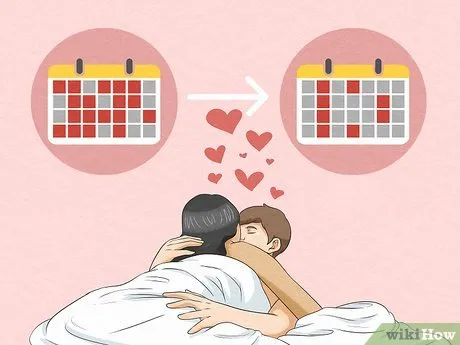What Is The Honeymoon Phase
The honeymoon phase is a magical period in a relationship characterized by intense feelings of love, excitement, and passion. It’s that initial stage where everything feels perfect, and you can’t get enough of each other. During this time, couples often experience heightened physical attraction, idealized views of their partner, and a strong desire to spend every possible moment together. This phase is a natural part of the relationship development process, setting the foundation for a deeper connection. Understanding what defines the honeymoon phase can help you better navigate the transition into the next stages of your relationship, ensuring continued growth and fulfillment. It is a time of joy, discovery, and the building of a strong bond between two people, but it’s also important to understand that it’s not meant to last forever.
The honeymoon phase explained
The honeymoon phase is often described as a period of bliss and infatuation. During this time, couples tend to overlook flaws and focus on the positive aspects of their partner and relationship. Hormones like dopamine, oxytocin, and serotonin surge, contributing to feelings of euphoria and bonding. Communication is often effortless, and disagreements are minimal. The focus is primarily on pleasure, excitement, and building a strong connection. It is crucial to remember that this phase is temporary. It is an unrealistic portrayal of what a long-term relationship will be. Acknowledging this can prepare you for the changes that naturally occur as a relationship evolves, allowing you to embrace the next chapter with realistic expectations and a proactive approach to nurturing your bond.
How Long Does the Honeymoon Phase Last

The duration of the honeymoon phase varies from couple to couple. For some, it might last a few months, while for others, it could extend for a year or two. However, it’s uncommon for this intense, infatuated stage to last indefinitely. Several factors influence its length, including individual personalities, relationship dynamics, and life circumstances. The transition out of this phase doesn’t necessarily mean the end of the relationship; it signals a shift towards a more realistic and sustainable connection. It is important to prepare for this transition and to understand that the end of the honeymoon phase can be a natural and healthy part of the relationship’s evolution, paving the way for deeper intimacy and a more profound love.
5 Signs Your Honeymoon Phase Is Ending
Recognizing the signs that your honeymoon phase is ending can help you prepare for the transition and adapt your approach to the relationship. While the end of this initial period may feel bittersweet, it offers an opportunity to build a more profound and enduring connection. The following signs can signal a shift in the relationship dynamics, and understanding these will enable you to navigate the transition with grace and maturity. It’s not always a negative thing; it often means your relationship is moving toward a more stable and realistic phase.
Decreased Excitement and Passion
One of the most noticeable signs is a decrease in the initial excitement and passion. The intense feelings of infatuation that once dominated the relationship may wane. The constant butterflies and overwhelming desire to be together may become less frequent. While this can be disheartening, it’s a natural part of the process. As the initial rush of hormones subsides, a more grounded sense of love and companionship begins to develop. It doesn’t mean the love has disappeared; it simply evolves into a more mature and sustainable form. Maintaining excitement requires conscious effort. It involves planning dates, trying new things, and keeping the spark alive through intentional gestures of affection and intimacy. The goal is to nurture the connection in a way that sustains the relationship’s vitality.
Less Time Together

In the honeymoon phase, couples often want to spend every possible moment together. As life’s responsibilities and individual interests re-emerge, the amount of time spent together naturally decreases. Work, hobbies, friendships, and personal commitments start to take precedence, leading to less spontaneous time together. It’s essential to balance individual needs with the needs of the relationship. Openly discussing schedules, setting aside dedicated time for each other, and prioritizing quality over quantity can help maintain a strong bond. This shift presents an opportunity to cultivate a healthy balance, ensuring that both partners have space to pursue their individual passions while still nurturing the relationship. The key is to be intentional about the time you do spend together, making it meaningful and focused.
More Arguments or Disagreements
During the honeymoon phase, couples often overlook or minimize their differences. As time passes, these differences become more apparent, potentially leading to more frequent arguments or disagreements. It’s a natural part of getting to know each other more deeply. Disagreements aren’t necessarily a bad sign; they can provide opportunities for growth and understanding. The way couples handle these conflicts is crucial. Constructive communication, empathy, and a willingness to compromise are essential for resolving issues and strengthening the relationship. Learning to navigate conflict healthily can lead to a deeper understanding of each other’s needs and a stronger, more resilient bond. When differences are addressed with respect and a collaborative spirit, they can strengthen the foundation of the relationship.
Focusing on Faults
In the honeymoon phase, couples tend to focus on their partner’s positive qualities. As the initial infatuation fades, it’s common to start noticing each other’s flaws and imperfections. This can lead to a shift in perspective, where the focus moves from adoration to critique. It is important to remember that no one is perfect. A healthy relationship involves accepting your partner’s flaws while appreciating their positive qualities. Cultivating empathy, practicing forgiveness, and focusing on the good aspects of the relationship can help maintain a positive outlook. The goal is to create a supportive environment where both partners feel accepted and valued for who they are, imperfections and all. Recognizing that both partners will have flaws is crucial to building a lasting bond.
Reduced Affection and Intimacy

The honeymoon phase is characterized by intense physical and emotional intimacy. As the relationship matures, the frequency and intensity of affection and intimacy might decrease. This doesn’t necessarily indicate a decline in love. It is a natural adjustment. However, it’s essential to maintain intimacy in other forms, like emotional closeness, shared experiences, and regular communication. Prioritizing physical touch, expressing appreciation, and creating opportunities for connection can help keep the spark alive. Intimacy is about more than just physical acts; it’s about feeling safe, understood, and loved. Openly discussing needs and desires, and making a conscious effort to maintain closeness, can keep the relationship thriving. Maintaining a healthy level of intimacy is crucial for long-term happiness and satisfaction.
Navigating the Transition After Honeymoon Phase
Navigating the transition after the honeymoon phase requires conscious effort, open communication, and a willingness to adapt. It’s not a sign of failure but a step towards building a more sustainable and fulfilling relationship. Understanding the dynamics of this shift and proactively addressing potential challenges can help couples build a stronger, more resilient bond. The key is to approach this transition with a positive mindset, focusing on growth, and mutual support. It is a time to deepen your connection. It is a time to solidify the foundation of your relationship.
Communication Is Key
Open and honest communication is the cornerstone of a healthy relationship. After the honeymoon phase, it’s crucial to share your feelings, needs, and expectations with your partner. Discussing any changes in your relationship, addressing concerns, and actively listening to each other’s perspectives can prevent misunderstandings and conflicts. Regular check-ins, expressing appreciation, and being willing to have difficult conversations are essential for maintaining a strong connection. Honest communication builds trust and allows you to navigate challenges together. When both partners feel comfortable expressing themselves, they are better equipped to build a relationship that is built on a solid foundation.
Quality Time Together

As life becomes more demanding, it’s easy for couples to drift apart. Making time for each other is more important than ever. Plan regular date nights, even if they’re just a quiet evening at home. Engage in activities that you both enjoy, and make an effort to disconnect from distractions like phones and social media. Quality time is not just about being physically present; it’s about being mentally and emotionally available to your partner. These shared experiences strengthen your bond and remind you why you fell in love in the first place. It’s not about how much time you spend together; it’s about how you spend it, making sure that you are truly connecting with each other.
Acceptance of Differences
No two people are exactly alike, and as the initial infatuation fades, differences in opinions, interests, and values may become more apparent. Accepting these differences, rather than trying to change your partner, is essential for a lasting relationship. Embrace each other’s unique qualities, and find ways to compromise and support each other’s individual needs. Recognizing that differences are an opportunity for growth, and not a source of conflict, can strengthen the bond. This creates a more flexible and understanding dynamic, which will help you navigate challenges together. The goal is to create a space where both partners feel valued for their individuality.
Setting Realistic Expectations
The honeymoon phase often sets unrealistic expectations for the future of the relationship. It’s important to move past these idealized views and embrace the reality of a long-term partnership. Understand that ups and downs are normal, and that conflicts will arise. Adjust your expectations, and be willing to work through challenges together. Building a strong foundation means accepting that there will be times when you disagree and times when you don’t feel as passionately in love. Realistic expectations help to reduce disappointment and keep the focus on the relationship. This approach will contribute to a more satisfying and sustainable partnership. Remember that a successful relationship is not about constant bliss, but about the ability to navigate life’s challenges together.
Maintaining Romance After the Honeymoon Phase

Maintaining romance after the honeymoon phase requires conscious effort and a proactive approach. The initial spark may naturally evolve, but that doesn’t mean the romance has to fade. By intentionally nurturing your relationship, couples can keep the connection alive and thriving. It is about creating a lasting bond. Implementing small gestures, planning special moments, and prioritizing each other can keep the love burning bright. With intentional effort, the romance can continue to deepen, fostering a strong connection.
Plan Date Nights
Date nights are an excellent way to keep the romance alive. Set aside dedicated time each week or month to spend quality time together. Plan special activities that you both enjoy, whether it’s a romantic dinner, a movie night, or a weekend getaway. These dates provide an opportunity to reconnect, create new memories, and keep the excitement and passion alive. Make the date nights a priority. Put them in the calendar and treat them as essential appointments. This helps to make sure that you are making time for each other and keeping the romance alive. The act of planning and anticipating date nights can be a great boost to your relationship.
Express Appreciation
Expressing appreciation is a simple yet powerful way to maintain romance. Show your partner that you value them by regularly expressing your gratitude for their presence in your life. Small gestures, such as saying “thank you” for the little things, writing a love note, or offering a sincere compliment, can go a long way. Expressing appreciation fosters feelings of love and connection. It also reinforces the positive aspects of your relationship. The more you show your partner that you value them, the more they will feel loved and appreciated. When you put effort into showing your appreciation, it deepens intimacy.
Try New Experiences Together

Trying new experiences together can help reignite the spark and create new memories. Explore new hobbies, travel to new places, or simply try a new restaurant. These shared adventures help you to see each other in new ways, broadening your horizons and strengthening your bond. Stepping outside of your comfort zone together can create excitement and a sense of adventure. These experiences provide opportunities for laughter, connection, and shared growth. The shared novelty and the experiences create memories that you both can treasure for years to come. It can also lead to discovering new facets of each other’s personalities, which further deepens your intimacy.
When to Seek Relationship Advice
Knowing when to seek relationship advice is a sign of strength and commitment. Recognizing that you and your partner may need help and taking proactive steps to address challenges shows maturity and a desire to work through difficulties. Seeking professional guidance can provide valuable tools, perspectives, and support to navigate complex issues. Knowing when to seek advice can strengthen the bond and enhance the overall relationship. It is a sign of commitment to the relationship.
Recognizing When You Need Help
It’s important to recognize when you and your partner may benefit from professional help. Signs that indicate the need for relationship advice can include: persistent communication problems, recurring conflicts, feelings of emotional distance, a decline in intimacy, difficulty resolving disagreements, and significant life transitions. If these issues persist and negatively impact your relationship, it may be time to seek guidance. Don’t hesitate to reach out for support. It is a sign of strength. Taking action can help improve the relationship.
Seeking Professional Guidance

Seeking professional guidance from a therapist or counselor can provide valuable tools and support. A therapist can help you and your partner: improve communication skills, resolve conflicts, address underlying issues, and develop healthier relationship dynamics. They provide an objective perspective and offer strategies for navigating challenges. Therapy can be a safe space to express feelings and work towards a more fulfilling partnership. The therapist acts as a mediator. Seeking professional help demonstrates your commitment to growth. It also provides the resources needed to build a more resilient relationship.
